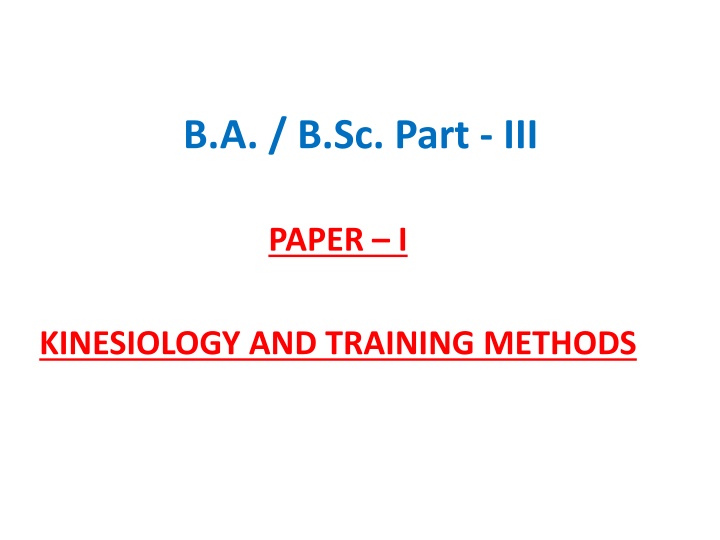
Kinesiology and Training Methods - Axes of Human Body
Explore the concept of axes in the human body, including the frontal, longitudinal, and sagittal axes. Learn how movements occur around these axes and their relationship with different planes of movement.
Download Presentation

Please find below an Image/Link to download the presentation.
The content on the website is provided AS IS for your information and personal use only. It may not be sold, licensed, or shared on other websites without obtaining consent from the author. If you encounter any issues during the download, it is possible that the publisher has removed the file from their server.
You are allowed to download the files provided on this website for personal or commercial use, subject to the condition that they are used lawfully. All files are the property of their respective owners.
The content on the website is provided AS IS for your information and personal use only. It may not be sold, licensed, or shared on other websites without obtaining consent from the author.
E N D
Presentation Transcript
B.A. / B.Sc. Part - III PAPER I KINESIOLOGY AND TRAINING METHODS
UNIT - I AXES of human body AXES of human body
INTRODUCTION The Axis : The Axis is the imaginary line around which the movement takes place. An Axis is defined as an imaginary line that is at right angles to the plane, about which the spinning takes place or the body rotates. Note: Any movement occurs in a plane around an axis. Axis of the same plane makes an angle perpendicular to that plane.
AXES (The plural of axis is Axes) An axis is an imaginary line about which the body (or limb) rotates. Frontal or (medio-lateral) axis X-Axis Longitudinal or (superio-inferior) axis Y-Axis Sagittal or (anterio-posterior) axis Z-Axis An imaginary axis of rotation that passes through a joint to which it is attached. Movement, both whole body and segmental, takes place in the plane and around an axis.
Relationship of Axis and Plane The blue colour area represents the horizontal plane and the black line represents the Y-axis. The Y-axis is perpendicular to the the horizontal plane (transverse plane) The point which rotates around this axis will move in the horizontal plane. Compulsorily, the movement in a given plane takes place around the axis that is perpendicular to that plane.
X-Axis (Frontal Axis) It passes from side to side. Rotation in the saggital plane takes place around X-Axis. Frontal Axis of the body passes horizontally from side to side at right angles to the saggital plane.
Y-Axis (Vertical Axis) It passes from top to bottom. Rotation in the transverse plane takes place around Y-Axis. The Axis of the body that passes head to foot at right angles to the transverse plane.
Z-Axis (Sagittal Horizontal Axis) It passes from front to back. Rotation in the frontal plane takes place around Z-Axis. The Axis of the body that passes from front to rear lying at right angles to the frontal plane.
References www.slideshare.net/shimaa2022/planes-axes www.slideshare/TodaysfitnessTrainerttf-planes- axesmovement Biomechanics: A qualitative approach for studying Human Movement, second edition. Ellen Krieghbaum, Katharine Barthels, Macmillan Publishers, London. Textbook of Kinesiology, V.D. Bindal, The Health Science Publisher, New Delhi I London I Panama
